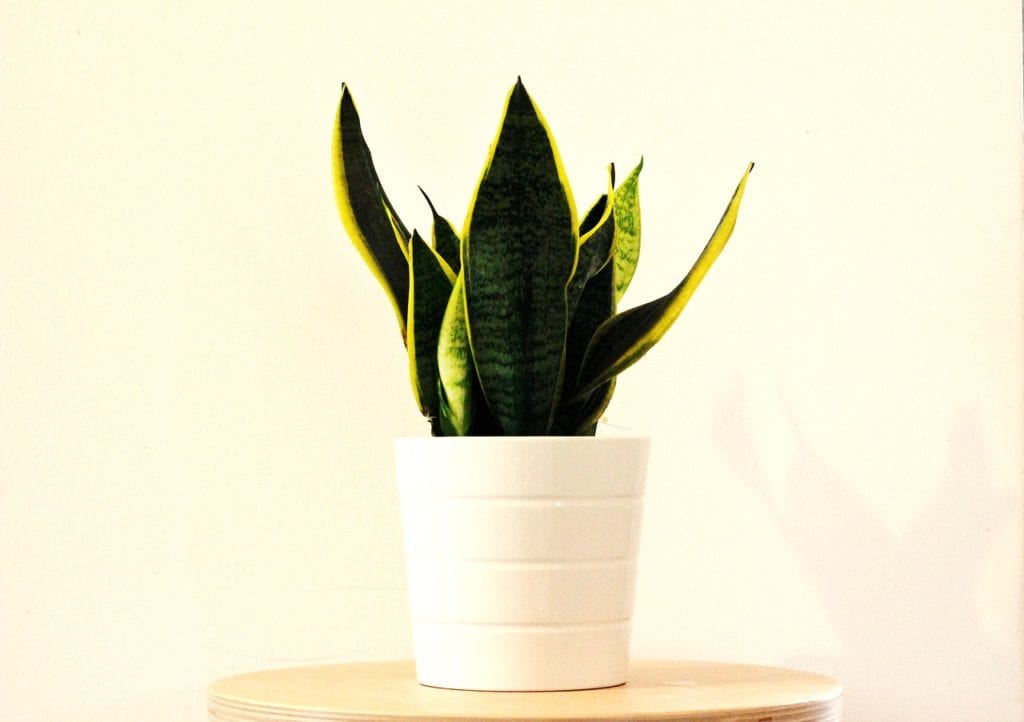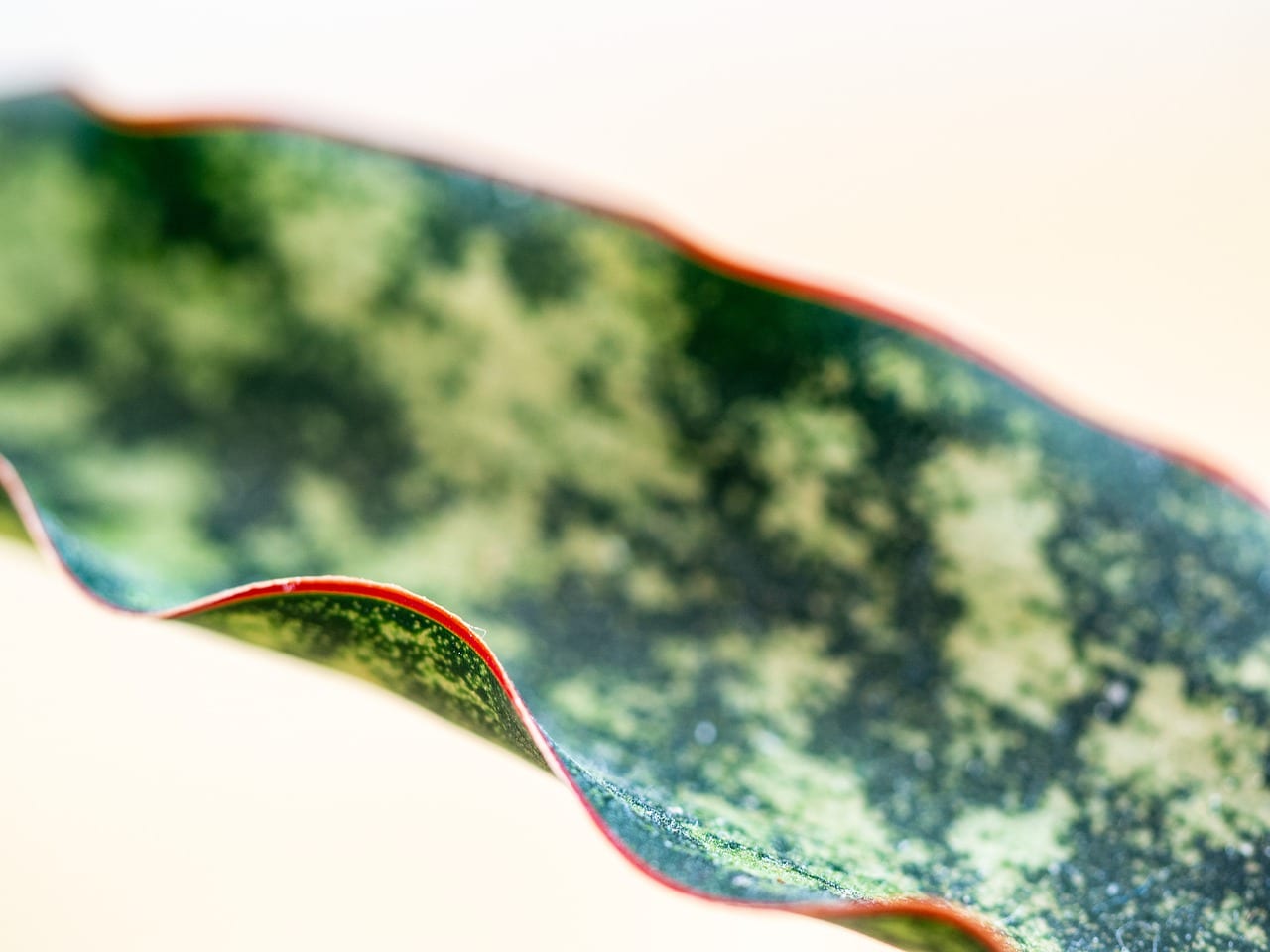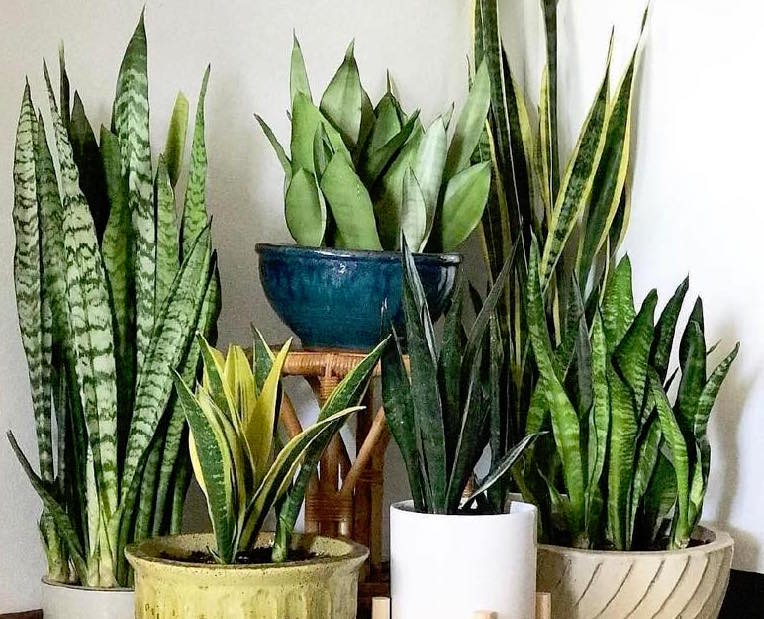When the summer heat starts blazing, you can cool off with some indoor gardening when you choose to incorporate houseplants into your living spaces. Houseplants add instant interest to any room and many houseplants act like mean, green, air purifying machines. Take a closer look at one of our favorite air purifying houseplants we carry at Rainbow Gardens, the Sansevieria.
Air Purifying Sansevieria
Sansevierias. Also known as “snake plant” and my personal favorite, “mother-in-law tongue”, sansevierias are one of our top choices for air purifying plants. These hardy, easy-to-care for houseplants absorb over 100 pollutants and at least 4 major toxins through their leaves making sansevierias one of the most effective air purifying, toxin-fighting plant you can buy. This is a proven fact from a 1989 extensive study in space stations published by NASA folks!
Sansevierias are great allergen fighters too! They continuously produce oxygen, especially at night when most other plants start producing carbon dioxide. And they release moisture and humidity into the air which can decrease airborne allergens like dust and dander. sansevierias continue to produce oxygen. That’s air purifying at its finest! Allergies, take a hike!

Easy Care for Sansevieria
Air purifying and allergen fighting qualities aren’t the only reason we love sansevierias at Rainbow Gardens. These houseplants are one of our top recommended choices for our customers who are, let’s just say, gardening challenged. When we get a customer who needs an easy-to-grow, low-maintenance, able-to-suffer-a-little-neglect, forgiving type of plant, we point them to the sansevieria.
- Sansevierias are adaptable to many sources of light from direct sunlight to low indoor light; so there is literally a spot for one anywhere in your house. Their favorite spot will be somewhere they can receive 5-6 hours of indirect bright light. But again, they are quite forgiving.
- Sansevierias can go for long periods of time without water. As a matter of fact, too much water in the soil will cause root rot and kill these houseplants. Checking to see when the soil is completely dry is the best way to tell when you should water sansevierias. You’ll need even less water for these houseplants during winter. Pot up your sansevieria in cactus/succulent mix or any well-draining potting soil. You dont want to use any moisture retaining soil for these houseplants.

Outdoor sansevierias should be brought in during winter when frost is predicted. Other than that, your sansevieria is happy the rest of the year sitting on a porch or patio outdoors, or any room with a window indoors.
There are many varieties of sansevierias to choose from too, so have fun selecting your favorite. Just take a look at the featured photo at the top of this blog and you can get an idea of the different options available. You can find sansevierias bordered with yellow, red or white margins, or with green and white stripes. There are dwarf varieties that grow in a clumping form, or some that have twisted, wavy leaves. With over 70 varieties of the species, you are sure to find one that is perfect for your tastes.
Here is to gardening in the great indoors!
~The Happy Gardener, Lisa Mulroy


I am aware of the Benifits of Sansevieria.
In Shilpgram house we have many plants.